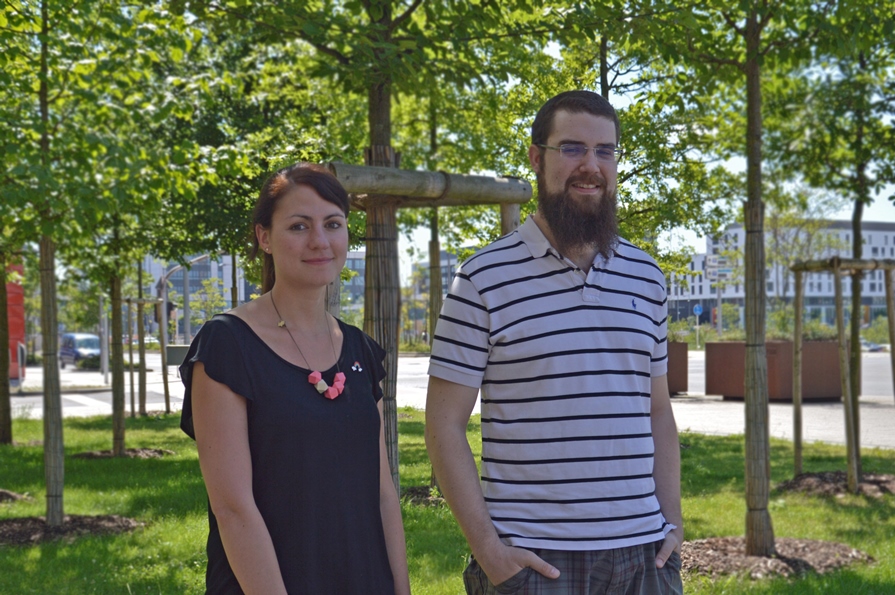Researchers from the University of Luxembourg have made it to the final round in the 2019 Fast Forward Science Web Video Contest. The winners of the final round are partially decided through a public vote, open until Sunday, 13 October – vote now! Every like and comment on the video will be counted.
120 videos were submitted across three categories – 17 submissions have made it to the final round of the 2019 Fast Forward Science Web Video Contest, in which the FNR is a partner for the first time.
The entry from Luxembourg is from early-career scientists David Kieffer, Max Greisen, Mila Marinova and Philip Goergen – it is called ‘Sam the Alien – The nonverbal assessment of mathematics’ and you can watch it below. The video tells the story of Sam, an alien, and her challenge to learn mathematics in a multilingual context. Max, a researcher at the University of Luxembourg, has developed a method that could help Sam..
Don’t forget to like and comment!
One of the researchers that contributed to the video, Max Greisen, has been featured in the FNR campaign Spotlight on Young Researchers – read the feature here. )
About voting
Each finalist video is available on Youtube. The videos with the most engagement – likes and comments – will win a Community Award. Additionally, a winner will be chosen in each of the three categories ‘SUBSTANZ’, ‘SCITAINMENT’ and ‘VISION’.
Interview with the video makers
“This video tells the story of Sam the alien. He recently landed on Earth and wants to go to school in his new home. When he tries to understand the material in the foreign language, however, Sam encounters problems relatively fast.
“The video describes a problem that many children with a foreign language background face at school and shows how basic mathematics could be taught alternatively in this context.”
Who is behind the video?
“We are a group of young researchers with different scientific backgrounds from Luxembourg and Belgium. After a workshop on web videos, we were finally able to put our ideas for a YouTube science channel into practice. You can watch the result in the video!”
Why are webvideos great for science?
“People’s attention and time are highly competitive nowadays and those who want to draw attention to themselves do so best in the digital world. This is also true for scientists. Videos on the net are therefore an efficient and entertaining way to bring scientific and sometimes very complex topics closer to a large number of people in a clear and concise way.”
What appealed to you about making a web video?
“Since we are all long-time fans of different Youtube channels, each of us had thought about how it would be to produce our own video. For our first video the course was finally set!”
Your recommendation for Science YouTubers?
“In our short time as video makers we learned that good planning will save you a lot of time later. But that shouldn’t prevent anyone from improvising and adapting the plan again and again if something doesn’t work out as expected. You shouldn’t spend too much time on details before you get a rough but complete version of the movie. Finally, we can say that making your first own video is the best way to learn how to make videos!”
About Fast Forward Science & FNR
The web video competition Fast Forward Science, endowed with a total of 20,000 EUR spread across three categories, is a joint project of Wissenschaft im Dialog and the Stifterverband and has been held annually since 2013. In the framework of its collaboration with Wissenschaft im Dialog (WiD), the FNR is a partner in the 2019 Fast Forward web video contest.
The mission of Fast Forward Science is to make science web videos more visible: The medium of web video should be perceived and used more as a means of communication for scientific topics suitable for the masses.
The FNR is convinced that science communication has an important role to play in today’s society – many topics in politics and everyday life are complex and research contributes valuable input. Therefore, the FNR encourages researchers and science communicators to speak up and let their voices be heard – videos, via channels such as Youtube, is a great tool for reaching a wide audience.
In May 2019, the FNR organised a two-day workshop for 30 participants, who learned how to communicate science through the medium of video. Ahead of the workshop, a keynote talk was held by famous scientist and edutrainer Mai Thi Nguyen-Kim about why science and Youtube are a perfect fit. The 4 researchers were among the 30 participants at a two-day workshop the FNR organised in May 2019, where participants learned how to communicate science through the medium of video.
“Web videos offer many possibilities to communicate a scientific topic in a creative way and to reach many people. In addition, the web video design process encourages scientists to explore the values and interests of society in relation to their own science – a valuable process in itself. This is why we want to encourage young scientists in Luxembourg to use this form of communication, to give free rein to their creativity and to have fun at the same time.” – Jean-Paul Bertemes, Head of Science in Society, FNR


